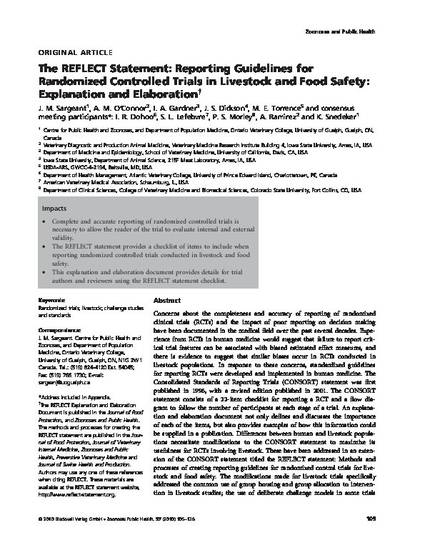
Concerns about the completeness and accuracy of reporting of randomized clinical trials (RCTs) and the impact of poor reporting on decision making have been documented in the medical field over the past several decades. Experience from RCTs in human medicine would suggest that failure to report critical trial features can be associated with biased estimated effect measures, and there is evidence to suggest that similar biases occur in RCTs conducted in livestock populations. In response to these concerns, standardized guidelines for reporting RCTs were developed and implemented in human medicine. The Consolidated Standards of Reporting Trials (CONSORT) statement was first published in 1996, with a revised edition published in 2001. The CONSORT statement consists of a 22-item checklist for reporting a RCT and a flow diagram to follow the number of participants at each stage of a trial. An explanation and elaboration document not only defines and discusses the importance of each of the items, but also provides examples of how this information could be supplied in a publication. Differences between human and livestock populations necessitate modifications to the CONSORT statement to maximize its usefulness for RCTs involving livestock. These have been addressed in an extension of the CONSORT statement titled the REFLECT statement: Methods and processes of creating reporting guidelines for randomized control trials for livestock and food safety. The modifications made for livestock trials specifically addressed the common use of group housing and group allocation to intervention in livestock studies; the use of deliberate challenge models in some trials and the common use of non-clinical outcomes, such as contamination with a foodborne pathogen. In addition, the REFLECT statement for RCTs in livestock populations proposed specific terms or further clarified terms as they pertained to livestock studies.
Available at: http://works.bepress.com/annette_oconnor/52/

This article is from Zoonoses and Public Health 57 (2010): 105, doi:10.1111/j.1863-2378.2009.01312.x.